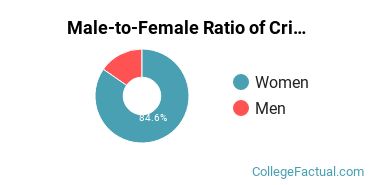 by our College Data Analytics Team
by our College Data Analytics TeamThe main focus area for this major is Criminal Justice. For more details on this concentration, visit its profile page.
Criminal Justice & Corrections is a major offered under the homeland security, law enforcement and firefighting program of study at University of Colorado Denver/Anschutz Medical Campus. Here, you’ll find out more about the major master’s degree program in criminal justice, including such details as the number of graduates, diversity of students, and more.
You can jump to any section of this page using the links below:
In 2019-2020, the average part-time graduate tuition at CU Anschutz was $1,255 per credit hour for out-of-state students. The average for in-state students was $377 per credit hour. The average full-time tuition and fees for graduate students are shown in the table below.
| In State | Out of State | |
|---|---|---|
| Tuition | $6,786 | $22,590 |
| Fees | $1,325 | $1,325 |
The median early career salary of criminal justice students who receive their master’s degree from CU Anschutz is $52,107 per year. That is 19% higher than the national average of $43,748.

If you’re interested in online learning, you’re in luck. CU Anschutz does offer online classes in its criminal justice master’s degree program. To see if the school offers distance learning options in other areas, visit the CU Anschutz Online Learning page.
Of the students who received their master’s degree in criminal justice in 2019-2020, 84.6% of them were women. This is higher than the nationwide number of 57.0%.

Racial-ethnic minority graduates* made up 30.8% of the criminal justice master’s degrees at CU Anschutz in 2019-2020. This is lower than the nationwide number of 45%.

| Race/Ethnicity | Number of Students |
|---|---|
| Asian | 1 |
| Black or African American | 0 |
| Hispanic or Latino | 3 |
| Native American or Alaska Native | 0 |
| Native Hawaiian or Pacific Islander | 0 |
| White | 8 |
| International Students | 0 |
| Other Races/Ethnicities | 1 |
Criminal Justice & Corrections students may decide to major in one of the following focus areas.
| Focus Area | Annual Graduates |
|---|---|
| Criminal Justice | 13 |
*The racial-ethnic minorities count is calculated by taking the total number of students and subtracting white students, international students, and students whose race/ethnicity was unknown. This number is then divided by the total number of students at the school to obtain the racial-ethnic minorities percentage.
More about our data sources and methodologies.